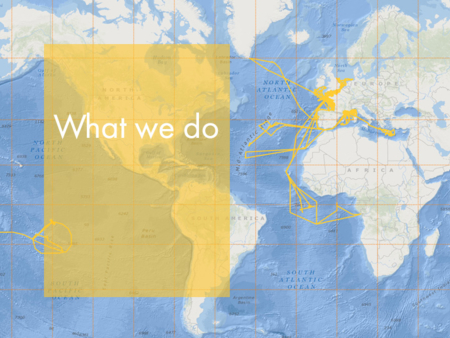Hull-fitted sound velocity sensor
The oceans are permanently moving bodies of water and their physical characteristics vary according to where the study takes place, the time of year, the time of day, weather conditions and so on.
So the validity of each velocity profile measured by the bathythermograph is of limited duration. In order to verify this validity in real time, all the ships have a sound velocity sensor fitted to their hull (except for the Alis and the Antea).
This velocity sensor measures continuously the propagation speed of sound in the subsurface of the sea and compares the results to the surface data obtained by the bathythermograph.
When the difference exceeds a certain threshold, it emits an alarm and a new sound-velocity profile is made using the bathythermograph.
Valeport MiniSVS
The MiniSVS is a Doppler-effect sound velocity sensor which functions at a frequency of 2.5 MHz. It is mounted in a stainless-steel canister which features an automatic bleeding valve and is supplied by an independent centrifugal pump. This sound velocity sensor is fitted to the Atlante.
- Measuring range: 1375–1900 m/s
- Resolution: 0.001 m/s
- Accuracy (maximum theoretical error): approx. 0.017 m/s
Reson SVP-C
The Reson SVP-C is the Doppler-effect sound velocity sensor fitted to the Pourquoi. It is mounted in a stainless-steel canister which features an automatic bleeding valve and is supplied by an independent centrifugal pump.
- Measuring range: 1350–1800 m/s
- Resolution: 0.01 m/s
- Accuracy: approx. 0.05 m/s




